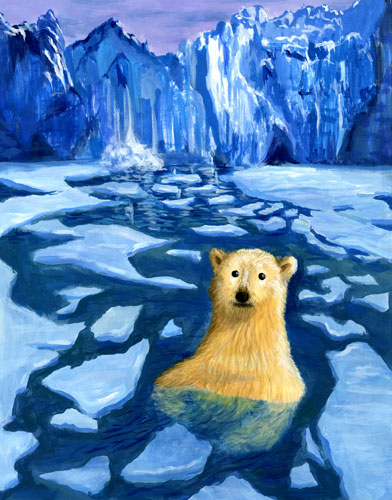 Clear and cold again this early Thursday on California’s north coast, working our way toward some rain supposedly coming this evening, or there-abouts, but supposedly pretty certain by tomorrow morning — the NWS doesn’t call it ‘rain,’ but ‘showers,’ which translates here close to the shoreline as, ‘drizzle.’
Clear and cold again this early Thursday on California’s north coast, working our way toward some rain supposedly coming this evening, or there-abouts, but supposedly pretty certain by tomorrow morning — the NWS doesn’t call it ‘rain,’ but ‘showers,’ which translates here close to the shoreline as, ‘drizzle.’
Yet if walking around, you’ll get soaked, and quick, a really-deceptive ‘drivel.’
No balderdash, either — saw this at HuffPost last night, and some scary climate news: ‘Sea levels across the Northeast coast of the United States rose nearly 3.9 inches between 2009 and 2010, according to a new study from researchers at the University of Arizona and the National Oceanic and Atmospheric Administration. The waters near Portland, Maine, saw an even greater rise — 5 inches — over the two-year period.’
(Illustration found here).
Termed, “unprecedented” in the history of tide gauge records — a series of instruments along the US eastern seaboard — and the near-4-inch uptick came from the average of 14 tide gauges located between New York and Canada. The big kicker: ‘“In terms of beach erosion, the impact of the 2009-2010 [sea level rise] event is almost as significant as some hurricane events.”‘
And then the surge went away.
This from NJ.com this morning:
To ocean-watchers, the rise in sea levels, particularly from Newfoundland to New York, constituted an “extreme sea level rise event,” according to Paul Goddard, a geosciences doctoral candidate at the University of Arizona and lead author of the paper published in the journal Nature Communications.
Statistical analysis suggests how extreme the sea level rise was: a 1-in-850 year event, the study said.
…
Such a sea level rise is equivalent to jamming 30 years of normal sea level rises into that two-year period, said Jon Miller, a Stevens Institute of Technology/New Jersey Sea Grant coastal specialist.
The one bit of good news is that the forces driving the change are not permanent, said Miller, who was not on the research team.
“It goes up, but it does come down,” he said.
It’s not just the seal level rise that is noteworthy, Goddard added.
“The thing that stands out is the time extent of this event,” as well as the amount of coastline affected, he said.
“This event is not associated with any particular storm or hurricane, which would cause hourly or daily extreme sea levels.”
…
The findings in the report do nothing to diminish the impact global warming is having on coastal communities, Goddard said.
If anything, the study says extreme sea level events may be linked to “human-induced climate change” and may worsen the impact of major storms.
Adding melting Artic and Antarctic ice will likely add to a future of higher sea levels along the North American coast, especially the northeast, the study said.
“For the 21st century, modeling results suggest that the increase in the greenhouse gas concentrations is likely to cause more extreme sea level rise events … along this densely populated coast,” it says.
“Once coastal storms compound high sea levels, more damages will result.”
Other than that, nothing to see here.
Other than icing on the drizzle-cake of sea-level rise — this yesterday via SFGate:
Scientists training their instruments on the skies have caught the world’s major greenhouse gas right in the act of warming the planet, researchers reported Wednesday, providing the first direct evidence that human activity is dangerously altering the environment.
The instruments captured more than a decade of rising surface temperatures, changes that were directly triggered by the atmosphere’s increasing burden of carbon dioxide, a team of scientists from Lawrence Berkeley National Laboratory and UC Berkeley reported.
…
“We have known for decades that there must be an effect, but getting a direct measurement and isolating the carbon dioxide component are a technological coup,” Christopher B. Field, a senior scientist at the Carnegie Institution for Science at Stanford University who has led two major IPCC reports, said in an e-mail.
The Berkeley scientists’ study, he said, provides concrete evidence for the first time of carbon dioxide’s effect on global warming.
…
The effects of carbon dioxide on the Earth’s heat balance have long been understood by climate scientists, who have calculated them in their theories of climate change.
But this is the first time the balance has been confirmed by laboratory instruments, according to Feldman and his colleagues.
“Our findings provide direct confirmation of the IPCC’s findings,” Feldman said in an interview.
Although he did not discuss the political controversy generated by climate-change deniers, he added, “We can hope now that people everywhere will be convinced that the IPCC’s reports have been correct.”
The IPCC, of course, the UN’s Intergovernmental Panel on Climate Change.
A drafty drizzle denied…